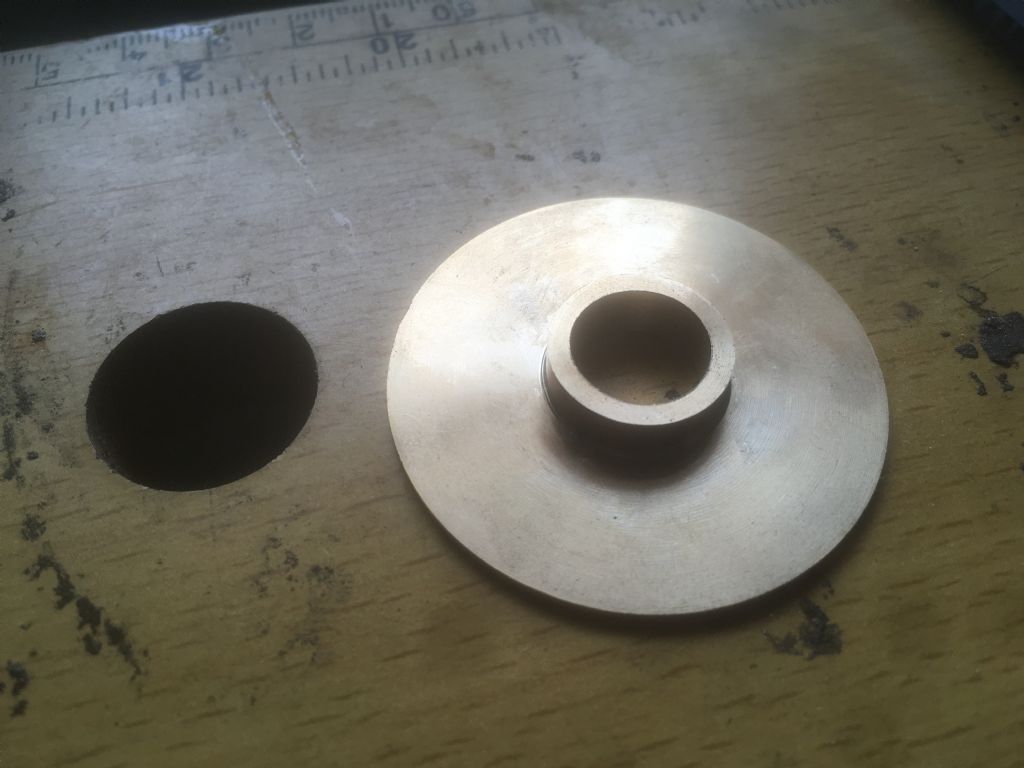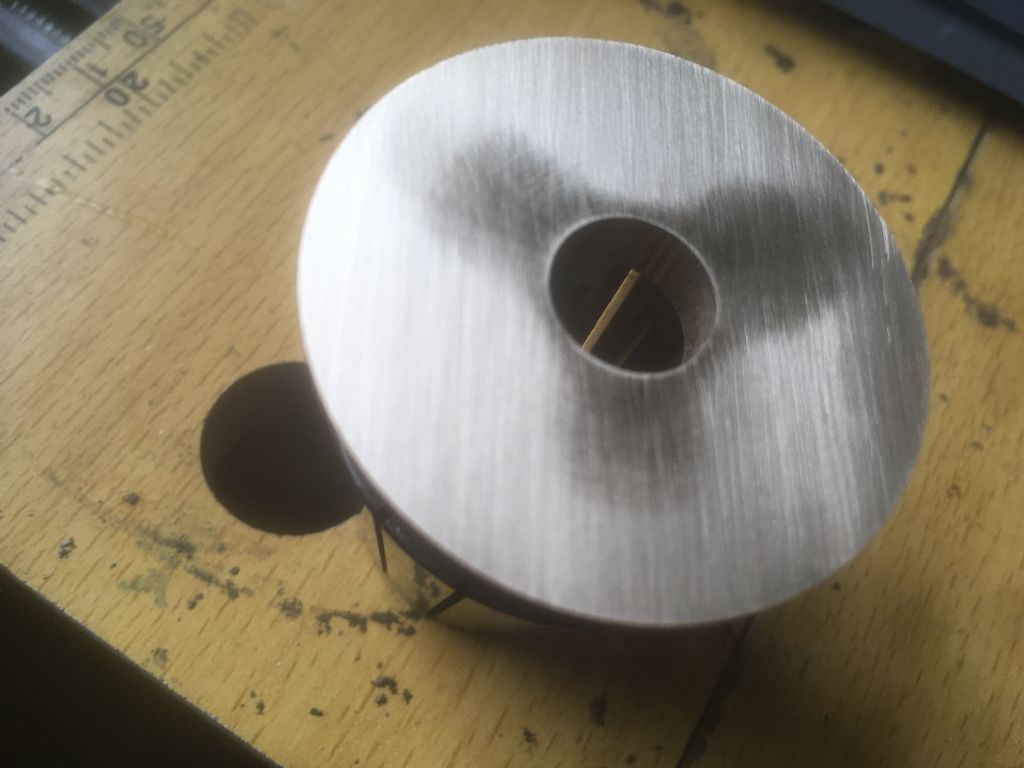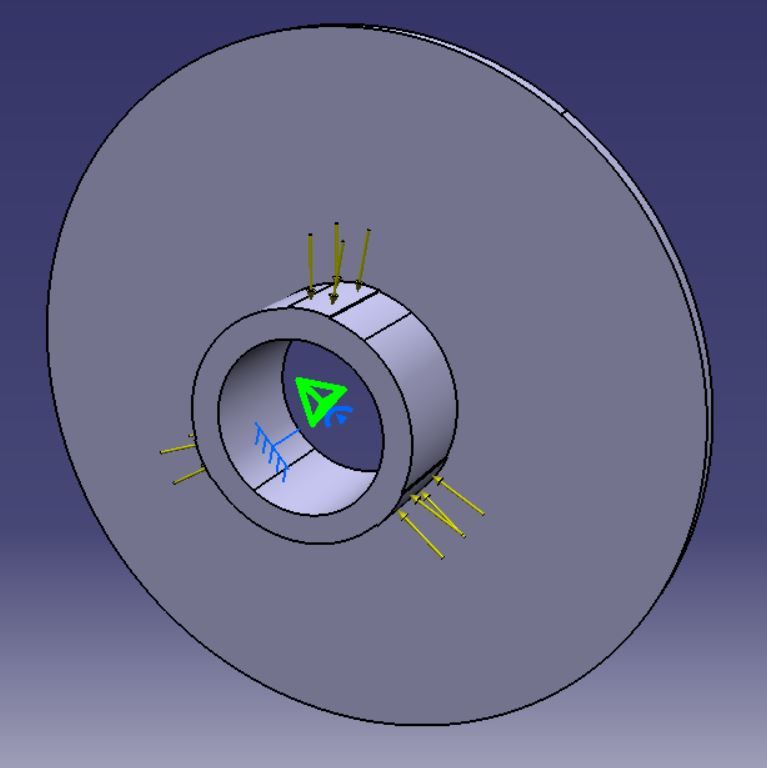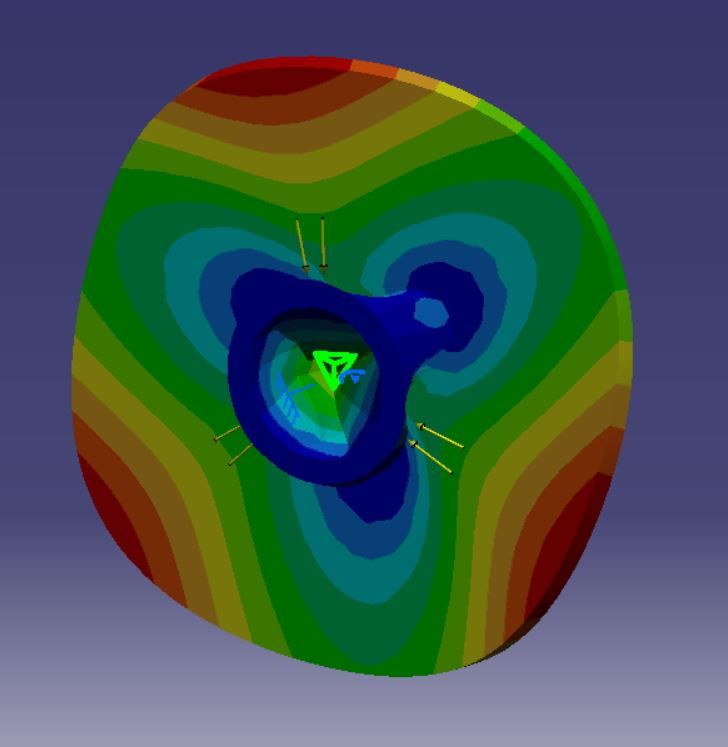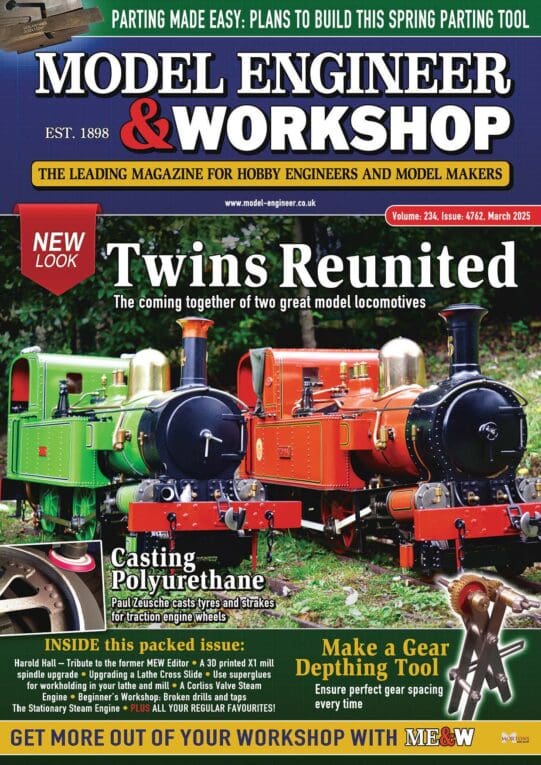Thanks for replies. I should have said that when I noticed the effect I checked the spigots for witness marks showing where the chuck had gripped. They were there, and the jaws had gripped the spigot at (eyeball accuracy!) 60° to the depressed areas, so the front faces of the jaws were behind the 'raised' areas. That observation got incorporated in my thinking about the cause and was implicit in my speculative explanation, but I should have mentioned it explicitly. Sorry!
If I have understood the axial deflection explanation correctly the pattern should be the other way round if it is right.
The discs were faced using a fresh 0.4mm radius CCGT insert (Arc Euro Trade), so sharp(ish). Roughing cut ~0.5mm, finishing cut ~0.05mm. So very little axial cutting force for the finishing cut I would have thought?
I take old mart's point that it might have been better to make the hole last – sequencing of machining operations is an aspect of this hobby I find particularly challenging. I guess it comes with experience – I didn't anticipate this effect so no amount of planning would have helped. The reason for the steely appearance is that I had to adjust lighting to display the contrast between the areas, and that must have mucked up the colours on my phone camera.
Anyone out there with a finite element analysis program? Well above my pension grade, but it would be interesting to see the stress field for work held in this way.
Robin
Edited By Robin Graham on 06/09/2022 00:10:28
Edited By Robin Graham on 06/09/2022 00:11:19
Edited By Robin Graham on 06/09/2022 00:12:58
Robin Graham.


